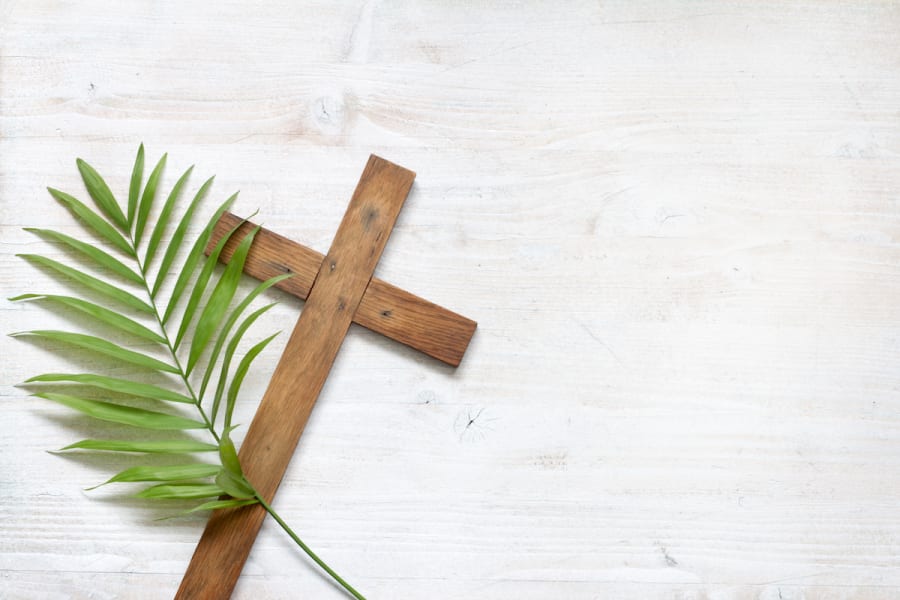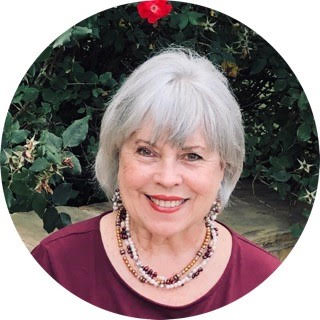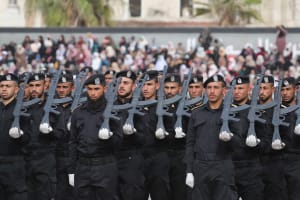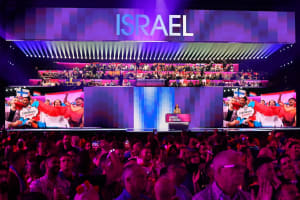Let us revive the ancient bonds between Passover and Easter

Despite three months of deepening political disunity within Israel – along with increased threats of war and terrorism from their enemies – Israeli Jews will still find a way to celebrate their 75th Passover festival (Chag Ha-Pesach) in their modern ancestral homeland. Israel is the epicenter of faith for both Jews and Christians. Two thousand years ago, God sent His beloved Son into our world as The Living Torah – The Living Word. No events will erase God’s sovereign plans.
Passover and Christian Holy Weeks are fast approaching. Christian Holy Week begins Palm Sunday, April 2, and culminates on Easter Sunday, April 9. Passover begins on April 5, lasting until April 13. The deep connections between Judaism and Christianity have suffered serious neglect. It is vitally important for our faith kinship to grow stronger – especially in the face of rising anti-Semitism and Christian persecution worldwide.
Discovering that we are grafted into the roots of Judaism through Jesus adds a rich dimension to our Christian faith. The deep connection and parallel between Passover’s freedom celebration and Jesus’ sacrifice on the cross is one we dare not miss. Jesus liberates believers – not from a Pharaoh’s cruelty to Israelite slaves with the resulting exodus to freedom – but freedom from sin’s dark enslavement.
Jesus completed the prophetic announcements in the Old Testament that had been written by Jewish scribes under God’s inspiration. In His three-year ministry, Jesus and His Jewish disciples started a new movement that was always intended to be the full blossoming of Judaism – not the replacement of it. Born into a Jewish family and culture, Jesus lived fully engaged in Jewish customs and religious observances. And His faith was ancient Judaism.
Because Passover was one of the three pilgrimage festivals within Judaism, thousands of Jews would have made their way to Jerusalem for freedom celebration. In fact, the ancient historian Josephus estimates a million or more pilgrims were already flowing into the capital before Jesus’ triumphal entry into Jerusalem. His fame had drawn adoring crowds, all hoping for a king to liberate them from their brutal Roman oppressors.
The day we call Palm Sunday is the ancient Day of Lambs. When Bethlehem shepherds herded huge flocks of Passover lambs into Jerusalem, the Perfect Lamb rode a donkey amid thousands of lambs parading into the holy city as Temple sacrifices. It is an exquisite picture of Divine context. In the first Passover in Egypt, God instructed Israelites to choose a perfect lamb to kill not only for food, but to apply its blood to their doorposts. God promised that when the Angel of Death swept over Egypt and saw the blood, death would pass over the Israelites’ firstborn. The blood of lambs saved lives!
In Jesus’ day, the Sadducees appointed expert Levitical shepherds to nurture lambs in Bethlehem’s fields owned by the religious leaders. Bethlehem, the Perfect Lamb of God’s birthplace! The Sadducees conducted a lamb “beauty contest” at the Lamb’s Gate, choosing only the perfect ones. 1 Peter 1:18-19 proclaims, “Knowing that you were not redeemed with perishable things… but with precious blood, as of a lamb unblemished and spotless, the blood of Christ.”
For Jews, from generation to generation, the Passover Seder celebration recounts the theme of freedom from slavery. The modern Jewish Passover meal is called a Seder, meaning “order,” and lasts for hours with prayers, the feast, and recounting the Exodus freedom stories. In recounting those stories, Jewish families use the Passover Haggadah, a script developed over hundreds of years. This cherished collection of prayers, psalms and benedictions, which is used as a teaching tool, is recited on the eve of Passover.
A Passover Seder centerpiece displays six items. One of them holds a secret meaning for Christians. Matzo, a flat cracker bread, has tiny holes and brownish stripes. For us, Matzo is a visual representation of nails piercing Jesus’ body on the cross and the stripes inflicted on our Lord by Romans. For Jews, it represents their unleavened bread when Israelites hastily fled Egypt after the tenth plague.
Jesus would have celebrated Passover annually even going back to His childhood: “His [Jesus’] parents went to Jerusalem every year at the Feast of the Passover. And when He was twelve years old, they went up to Jerusalem according to the custom of the feast” (Luke 2:41-42).
Jesus’ last Passover is what we later called the Last Supper. In Luke 22:15, Jesus expresses His heartfelt emotion in the Upper Room with His disciples, “I have earnestly desired to eat this Passover with you before I suffer.” The dramatic events swiftly moved forward. Afterward, Jesus and His remaining eleven disciples left the Upper Room. In darkness, the group walked about a mile to the Mount of Olives, an important manufacturing location that made olive oil. Jesus and His disciples frequently visited Gethsemane. The English word “Gethsemane” combines two Hebrew words, Gat and Shmanim, defined as “the place where olive oil is pressed.”
The popular geographical location is rich with symbolism. Isaiah 53:5 describes a compelling truth, “He was crushed for our iniquities.” Like the wooden beams holding up the olive crushing stones, our Savior Jesus bore the wooden beams of the crucifixion cross – crushed under the weight of our sins. The larger presses included stones (suspended with ropes from wooden beams) weighing up to a ton. The presses transformed the olives to use for cooking, anointing oil, and Temple lights.
In the Garden of Gethsemane, Jesus pleaded in Mark 14:36, “Abba [Aramaic for Father], everything is possible for you. Take this cup from me. Yet not what I will, but what You will.” We are familiar with Jesus’ anguished prayers laced with tears of blood before His arrest. Hematidrosis is the medical name for Jesus’ tears, an extremely rare occurrence where blood is mixed with sweat. Jesus’ crushing in “the place where olive oil is pressed” produced the precious oil and blood of our redemption.
Eventually, Roman soldiers and civilians showed up. Judas Iscariot led the way, placing the kiss of death on Jesus’ face. Throughout the traumatic night, recall what Jesus declared to the Pharisees in John 10:17-18, “No man takes my life from me; I am laying it down of my own will. The reason my Father loves me is that I lay down my life – only to take it up again. No one takes it from me, but I lay it down of my own accord. I have authority to lay it down and authority to take it up again. This command I received from my Father.”
Yes, many accomplices acted out their role in Jesus’ execution outside Jerusalem’s walls—the corrupt chief priests and Sadducees, Judas, Pilate, and Roman soldiers. Nevertheless, no one could stop God’s redemption plan. Jesus chose to lay down His life for the freedom and salvation of all people everywhere.
During Jesus’ crucifixion, Temple priests were slaughtering the Bethlehem lambs by the thousands. They threw lamb’s blood all over the temple court. Expertly wielding their knives, the priests chanted the Hallel (Psalms 113-118). It is possible that Jesus heard snippets of the chants where He hung outside Jerusalem’s walls. Psalm 116:3 recounts, “The cords of death entangled me, the anguish of the grave came over me; I was overcome by distress and sorrow.”
Jesus’ sacrificial death seemed to be the end of every hope held by scores of Jewish believers who loved Him. In an act only the mighty hands of God could achieve, He tore the purple, scarlet, and blue veil in the Temple in two as the perfect Passover Lamb breathed His last breath. Matthew 27:51 verifies it. “At that moment, the curtain of the temple was torn in two from top to bottom. The earth shook, the rocks split.” The curtain – 60 feet high, 30 feet wide and four inches thick – sheltered the Holy of Holies, God’s Court, containing the Ark of the Covenant and the Mercy Seat. It is easy to imagine the priests’ fright and screams when they saw the torn curtain. It was incomprehensible, since only the Jewish High Priest entered the Holy of Holies – and only once a year.
When we invite our Lord Jesus into our lives, His shed blood covers the doorposts of our lives. When our Holy God the Father looks at us, He sees the One Perfect Lamb’s blood. No longer were thousands of sacrificial lambs needed! It is His tallit, His prayer shawl – covering us, saving us from death, and giving us the gift of eternal life.
The Divine connections between Passover and Easter are a cause for endless thankfulness to God. His Promised Land Israel and His Chosen people served as vessels for His vast gift of salvation imparted to us through the Jews.
This article originally appeared here and is reposted with permission.

A speaker and consultant, Arlene Bridges Samuels authors the weekly feature column for The Christian Broadcasting Network/Israel on their Facebook and Blog since 2020. Previously she pioneered Christian outreach for the American Israel Public Affairs Committee (AIPAC). Retiring after nine years, she worked part-time for International Christian Embassy Jerusalem USA as Outreach Director for their project, American Christian Leaders for Israel (ACLI) Arlene is an author at The Blogs-Times of Israel, often traveling to Israel since 1990. By invitation she attends the Israel Government Press Office (GPO) Christian Media Summits as a recognized member of Christian media worldwide. Read more of her articles at CBN Israel blog. Arlene and her husband Paul Samuels have coauthored a book, Mental Health Meltdown, illuminating the voices of bipolar and other mental illnesses. On Amazon













